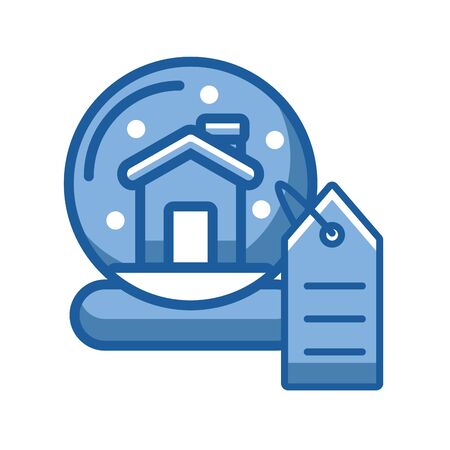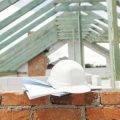1. Understanding the Risks of Frozen Pipes
Frozen pipes are a common winter problem that many homeowners across the U.S. face when temperatures drop below freezing. Understanding why pipes freeze and which parts of your home are most at risk can help you take smart steps to prevent costly damage.
Why Do Pipes Freeze?
Water expands as it freezes, and when it happens inside your plumbing system, the pressure can cause pipes to burst. This is especially likely when the temperature drops below 32°F (0°C) for an extended period.
Common Causes:
- Lack of insulation around pipes
- Poor heating in certain areas of the home
- Outdoor or exposed plumbing
- Sudden temperature drops
Which Areas Are Most Vulnerable?
Certain parts of your home are more prone to frozen pipes due to their location or lack of heat exposure. Heres a quick look:
| Area | Reason for Vulnerability |
|---|---|
| Attics | Poor insulation and limited heating |
| Basements | Colder ground temperatures and exposed piping |
| Crawl spaces | Lack of insulation and airflow from outside |
| Exterior walls | Pipes close to outside with minimal protection from cold air |
| Garages | No central heating, especially near water heaters or laundry hookups |
What Can Happen If Pipes Freeze?
The consequences of frozen pipes go beyond just inconvenience. A burst pipe can lead to major water damage, mold growth, and expensive repairs. Here’s what could happen:
- Water Damage: Flooding from a burst pipe can ruin flooring, drywall, and personal belongings.
- Mold Growth: Moisture from leaks creates an ideal environment for mold to develop.
- High Repair Costs: Emergency plumbing repairs and property restoration can be costly.
- Disruption: Lack of running water or necessary repairs can disrupt daily life.
2. Insulating Vulnerable Pipes
Insulating your pipes is one of the most effective ways to prevent them from freezing during harsh winter months. Pipes located in unheated areas like basements, attics, crawl spaces, and exterior walls are especially at risk. Proper insulation keeps the heat in and the cold out, reducing the chances of costly pipe bursts.
Where to Focus Your Insulation Efforts
- Basements: Exposed water lines running along walls or ceilings
- Attics: Pipes near vents or exterior rooflines
- Crawl Spaces: Any visible piping that isn’t buried or already insulated
- Exterior Walls: Pipes inside cabinets or behind poorly insulated wall sections
Effective Pipe Insulation Materials
There are several types of insulation products designed specifically for plumbing pipes. Choosing the right material depends on your climate, budget, and where the pipes are located. Heres a quick comparison of common options:
| Insulation Type | Description | Best Used For |
|---|---|---|
| Foam Pipe Sleeves | Tubular foam that slips over pipes; easy DIY installation | Basements, attics, crawl spaces |
| Fiberglass Pipe Wraps | Flexible insulation with a plastic vapor barrier; good for high heat areas | Hot water pipes in colder zones |
| Rubber Insulation Tubes | Durable and flexible; resists moisture and extreme temperatures | Pipes exposed to both cold and humidity |
| Heat Tape (with Thermostat) | An electric cable that warms pipes when temps drop | Critical spots prone to freezing (use with caution) |
Helpful Tips for Installing Pipe Insulation
- Measure the diameter of your pipes to buy the correct size insulation sleeves.
- Seal all joints with duct tape or zip ties to keep insulation secure.
- If using fiberglass wrap, wear gloves and a mask for protection.
- Avoid compressing the insulation — it works best when it maintains its shape.
Bonus Tip:
If you have kitchen or bathroom sinks on exterior walls, leave cabinet doors open during freezing weather so warm indoor air can circulate around the pipes.

3. Keeping Indoor Temperatures Consistent
Maintaining a steady indoor temperature is one of the most effective ways to prevent frozen pipes during winter, especially if you’re planning to be away from home for the holidays. Sudden drops in temperature—even inside—can lead to under-heated areas where pipes are most vulnerable.
Why Consistent Heat Matters
Your home’s plumbing often runs through unheated or less-insulated parts of the house, such as basements, attics, garages, and inside exterior walls. If the temperature in these spaces dips too low, water inside the pipes can freeze and expand—leading to cracks or bursts that may cause expensive damage.
Recommended Temperature Settings
Even when youre not at home, its important to keep your heating system running. Here are some simple guidelines:
| Situation | Recommended Thermostat Setting |
|---|---|
| At Home (Daytime) | 68°F–72°F (20°C–22°C) |
| At Home (Nighttime) | 65°F–68°F (18°C–20°C) |
| Away for Short Trips | 60°F–65°F (15°C–18°C) |
| Away for Extended Travel | No lower than 55°F (13°C) |
Tips for Staying Warm & Safe During Holiday Travel
- Use a programmable thermostat: Set it to maintain minimum heat levels throughout the day and night.
- Open cabinet doors: In kitchens and bathrooms, leave cabinets open to allow warm air to circulate around plumbing.
- Seal drafts: Check windows and doors for cold air leaks and seal them with weatherstripping or caulk.
- Add insulation: Use pipe insulation sleeves in colder areas like basements or crawl spaces.
- Ask someone to check in: If youre away for an extended time, have a friend or neighbor check on your home regularly.
Bonus Tip:
If youre using a smart thermostat, many models allow remote monitoring and adjustments via smartphone apps—giving you peace of mind while youre traveling for the holidays.
4. Draining and Shutting Off Outdoor Faucets
When temperatures drop, outdoor faucets are one of the first places your plumbing can freeze. To prevent costly pipe bursts and water damage, it’s important to properly drain and shut off these fixtures before winter fully sets in. Follow this step-by-step guide to protect your home.
Step-by-Step Guide to Winterizing Outdoor Faucets
- Locate the Shut-Off Valve: Most homes have a dedicated shut-off valve for outdoor faucets. This is usually found in the basement, crawl space, or utility room. Turn it off completely.
- Open the Outdoor Faucet: Go outside and turn on the faucet to let any remaining water drain out. Leave it open throughout the winter to avoid pressure buildup.
- Disconnect Hoses: Remove all garden hoses connected to outdoor spigots. Leaving them attached can trap water in the faucet and cause freezing.
- Drain Residual Water: If your shut-off valve has a small drain cap, open it to release any water trapped between the valve and the outdoor faucet.
- Install Faucet Covers: Use insulated faucet covers (available at most hardware stores) to provide an extra layer of protection against freezing temperatures.
Quick Checklist for Outdoor Faucet Winterization
| Task | Status |
|---|---|
| Shut off indoor valve to outdoor faucet | ☑ Done / ☐ To Do |
| Open outdoor faucet to drain water | ☑ Done / ☐ To Do |
| Disconnect garden hoses | ☑ Done / ☐ To Do |
| Drain residual water from line (if applicable) | ☑ Done / ☐ To Do |
| Install insulated faucet cover | ☑ Done / ☐ To Do |
Tip:
If your home doesn’t have a separate shut-off valve for outdoor faucets, consider having a plumber install one. It’s a small investment that can save you big in repair costs down the road.
Why This Matters
Outdoor faucets are exposed directly to freezing temperatures, which makes them especially vulnerable. Even a small amount of leftover water inside the pipe can expand when frozen and cause pipes to crack or burst. Taking these simple steps now helps ensure you won’t be dealing with leaks or flooding later in the season.
Keep this checklist handy and make it part of your annual fall routine—it’s one of the easiest ways to safeguard your plumbing during winter.
5. Emergency Measures During Cold Snaps
When extreme cold hits, taking immediate action can help protect your home’s plumbing system from freezing and bursting. Here are some practical steps you can take during a cold snap to keep your pipes safe and avoid costly damage.
Keep Faucets Dripping
Allowing a slow drip from both hot and cold faucets can relieve pressure inside the pipes. Even a small trickle helps prevent water from freezing. Focus on faucets located along exterior walls or in colder areas of your home.
Open Cabinet Doors
If you have sinks located against outside walls, open the cabinet doors underneath them. This allows warm indoor air to circulate around the plumbing, helping to keep pipes above freezing temperatures.
Increase Indoor Heat
Maintain a consistent indoor temperature, even if youre away from home. Set your thermostat no lower than 55°F (13°C) to help prevent frozen pipes. It may cost a bit more in heating, but it’s far less expensive than repairing burst pipes.
Know the Signs of Frozen Pipes
Recognizing early warning signs can help you act quickly before major damage occurs. Look for:
| Warning Sign | Description |
|---|---|
| No water flow | If nothing comes out when you turn on the faucet, your pipe may be frozen. |
| Frost on pipes | You might see frost or ice buildup on exposed pipes, especially in basements or crawl spaces. |
| Bulging sections | Pipes that look swollen or deformed could be under pressure from ice buildup inside. |
If You Suspect a Pipe is Frozen
If you think a pipe has frozen, turn off the main water supply immediately to prevent possible flooding if the pipe bursts. Then, use a hair dryer or space heater to gently warm the affected section of pipe—never use an open flame.
Tip:
If youre unsure where your main shutoff valve is located, find it before winter hits. It’s usually where the water line enters your home—often near the water heater or basement wall.


